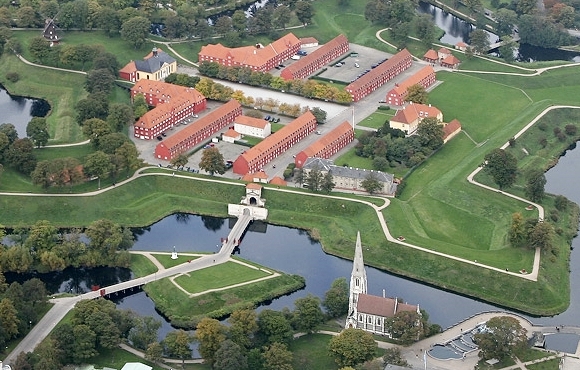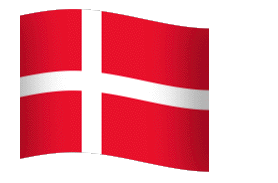10 reasons to love Copenhaguen
1. THE DANES KNOW HOW TO PLAY
In contrast
to the commercial clutter of most theme parks, Tivoli has clung on to much of
its 19th-century atmosphere. Alongside the modern rides and Michelin-starred
restaurants, the gardens are dotted with antique dodgems, vintage Ferris wheels
and twirling merry-go-rounds. The oriental theatre, built in 1874, stages
ballets and Pierrot pantomimes, while oompah bands serenade visitors from beneath
the willow trees, and Chinese lanterns twinkle in the branches overhead.
2. THERE’S AN URBAN BEACH
You might
not think of Copenhagen as a beach destination, but three miles south of the
centre is one of Denmark’s finest stretches of sand: Amager Strandpark, a vast
white beach extending along a sheltered lagoon, backed by gentle dunes and
marram grass. It’s popular all year round with cyclists and rollerbladers, and
come summer it’s awash with sunbathers. Be warned, though: swimming is best
left for the steely, as the water temperature is only ever bracing at best.
3. FOOD IS A PERFORMANCE
Copenhagen’s
gastronomic reputation has undergone a quiet renaissance over the last decade.
At 1.th (the name means ‘first floor to the right’), lodged inside a luxurious
apartment just off Copenhagen’s harbourfront, owner Mette Martinussen has
created a dining experience halfway between a posh dinner party and a piece of
live performance. Diners are sent their ‘invitation’ by email and mingle over
drinks in the retro drawing room, before being ushered through to watch the
head chef and his team at work in the kitchen-cum-dining room. The food is as
flamboyant as the concept, taking in everything from pork with seaweed and
horseradish foam to beetroot and liquorice ice cream.
4. THE CITY LIVES FOR PASTRY
Copenhagen’s
bakeries are piled high with pastries, but ask for a Danish and you’ll more
than likely get a funny look. They’re known as wienerbrød in Denmark, a
reminder that the nation’s most famous pastries were originally invented by
Viennese chefs during a nationwide strike by Danish bakers in the mid-1850s. A
century-and-a-half later, and the wienerbrød is still the sticky treat of
choice for Copenhageners. You’ll see people queuing up at bakeries for a cup of
coffee and freshly made wienerbrød throughout the morning. The city’s best are
handmade at La Glace, where the wienerbrød recipe has hardly changed since the
shop first opened its doors in 1870
5. IN THE SWIM
Copenhageners
don’t have to travel too far for a dip. Just south of the centre is the Islands
Brygge Havnebadet, one of two outdoor swimming pools in Copenhagen. It’s a
glorious place to experience an authentically Scandinavian swim; situated on
one of the city’s main canals, the pool’s streamlined design has won
architectural awards, and in summer the water temperature rarely falls below
20˚C.
6. DESIGNED FOR LIFE
Design in
Denmark is both a way of life and a passion that teeters close to an obsession.
Nowhere is this more obvious than at Copenhagen’s interior design store Illums
Bolighus. The historic shop is like an art gallery: every item, from lamps to
coffee tables, is displayed with the precision of a museum exhibit. If you’ve
never fallen in love with a coat hanger or a piece of cutlery, you’ve clearly
never been shopping at Illums Bolighus.
7. HYGGE: THE DANISH WAY
Falling
somewhere between cosy, friendly and chilled out, hygge is a word that’s
difficult to translate. The best way to get your head around hygge is to see it
in action. Copenhagen’s harbour district, Nyhavn, makes an ideal place to
start. On sunny days, Copenhageners can be seen sprawling along the waterfront,
sharing snacks at one of the bistros on the cobbled quayside. As dusk falls,
they huddle together under patio heaters to escape the chill evening air, or
duck into basement bars, with quintessentially hygge combinations of low
ceilings, tightly-packed tables and crackling fires.
8. BICYCLES RULE
It’s hardly
surprising that the city is often cited as the world’s most bike-friendly city.
With cycle lanes and flat streets, the appeal is obvious, but the real joy of
cycling here is the sheer variety of bikes on the streets. Copenhageners treat
their bikes as an expression of their personalities: some weld trunks onto the front
of their bikes to make a makeshift seat for passengers, while others transform
their machines into delivery carts or mobile prams. Try rentabike.dk (from £10 per day) or the city’s free
bike scheme.
9. A LITTLE VENICE
Copenhagen
looks at its best from the water. The city is criss-crossed by a network of
canals, and though the clippers and tall ships have long since sailed into the
sunset, the waterways are still an integral part of the city’s character. In
the well-heeled canal quarter of Christianshavn, yachts, barges and houseboats
jostle for space along the granite quays, while cruise-boats laden with
sightseers putter past the elegant shuttered townhouses. As the afternoon light
fades, the terraces of waterside restaurants such as Restaurant Kanalen fill up
with evening diners, while buskers serenade them with traditional Danish folk
songs.
10. SMØRREBRØD
Sliced rye bread (rugbrød)
topped with cold meats, smoked fish, cheese or pate – this open-faced sandwich
known as smørrebrød has been a lunchtime staple for the Danish for as long as
anyone cares to remember. For connoisseurs, there’s only one address in town
that cuts the mustard, and that’s Ida Davidsen. It retains a reassuringly
old-world feel: diners cram into wooden booths lit by candles, while aproned
waiters carry gleaming plates laden with sandwiches. In recent years, a new
breed of cafe has sprung up, championing a modern twist on the traditional
smørrebrød. One of the best is Aamanns, where you can pick up bento-style boxes
if you’re in a hurry. Now that’s progress.

.gif)









